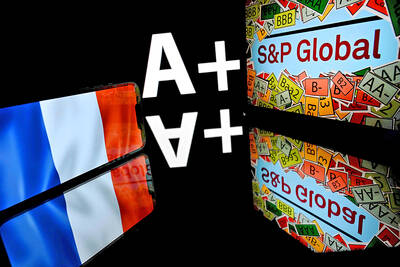Chinese banks are increasingly drawing on Western ways of selling off bad loans, after four of the largest five lenders reported a spike in defaults in an economy stuttering at its slowest growth rate in 25 years.
The lenders plan to expand the practice of selling bad loans bundled into financial products, to reduce the amount of unpaid debt on their books, according to banking insiders.
The practice, though common in the West, was mostly unheard of in China just a year ago. Its uptake reflects a government policy of relaxing restrictions on financial markets to attract investment, as well as banks’ hunger for ways to deal with a worsening bad loan situation as profit growth flags.
However, analysts say the practice masks the true extent of a situation exacerbated by so-called zombie loans neither in default or written off, languishing with cash-strapped local authorities. Central bank encouragement to increase lending and support the economy could only compound matters, they say.
Banks generally reported bad loan ratios — or the percentage of total lending which has soured — of 1 percent to 1.5 percent.
“I think the real level is around 2 to 3 percent,” Shanghai-based Cinda International Securities Ltd (信達國際證券) chief strategist Chen Jiahe (陳嘉禾) said.
Hong Kong-based Amundi Asset Management investment director Leon Goldfeld estimated the true bad debt ratio would reach 9 percent if economic growth slowed to 6 percent, rather than Beijing’s target of about 7 percent.
Industrial and Commercial Bank of China Ltd (ICBC, 中國工商銀行), Agricultural Bank of China Ltd (AgBank, 中國農業銀行), Bank of China Ltd (BOC, 中國銀行) and Bank of Communications Co Ltd (BoCom, 交通銀行) this week each booked marginal profit growth or contraction for the fourth quarter, with China Construction Bank Corp (中國建設銀行) reporting on Friday.
ICBC also booked a rise in bad loans to small businesses struggling with weaker overseas demand, and from coal-related enterprises in Western China suffering from falling coal prices.
AgBank reported its highest non-performing loan ratio in three years, primarily due to manufacturers, as well as wholesalers and retailers, whereas bad loans rose at their steepest pace in more than three years at BOC. At BoCom, soured debts reached their highest since 2010.
Faced with mounting bad debt, Chinese banks have been grouping soured loans and selling them as potentially high-risk derivatives to local asset managers, bankers said.

France cannot afford to ignore the third credit-rating reduction in less than a year, French Minister of Finance Roland Lescure said. “Three agencies have downgraded us and we can’t ignore this cloud,” he told Franceinfo on Saturday, speaking just hours after S&P lowered his country’s credit rating to “A+” from “AA-” in an unscheduled move. “Fundamentally, it’s an additional cloud to a weather forecast that was already pretty gray. It’s a call for lucidity and responsibility,” he said, adding that this is “a call to be serious.” The credit assessor’s move means France has lost its double-A rating at two of the

Jensen Huang (黃仁勳), founder and CEO of US-based artificial intelligence chip designer Nvidia Corp and Taiwan Semiconductor Manufacturing Co (TSMC, 台積電) on Friday celebrated the first Nvidia Blackwell wafer produced on US soil. Huang visited TSMC’s advanced wafer fab in the US state of Arizona and joined the Taiwanese chipmaker’s executives to witness the efforts to “build the infrastructure that powers the world’s AI factories, right here in America,” Nvidia said in a statement. At the event, Huang joined Y.L. Wang (王英郎), vice president of operations at TSMC, in signing their names on the Blackwell wafer to

AI BOOST: Although Taiwan’s reliance on Chinese rare earth elements is limited, it could face indirect impacts from supply issues and price volatility, an economist said DBS Bank Ltd (星展銀行) has sharply raised its forecast for Taiwan’s economic growth this year to 5.6 percent, citing stronger-than-expected exports and investment linked to artificial intelligence (AI), as it said that the current momentum could peak soon. The acceleration of the global AI race has fueled a surge in Taiwan’s AI-related capital spending and exports of information and communications technology (ICT) products, which have been key drivers of growth this year. “We have revised our GDP forecast for Taiwan upward to 5.6 percent from 4 percent, an upgrade that mainly reflects stronger-than-expected AI-related exports and investment in the third

RARE EARTHS: The call between the US Treasury Secretary and his Chinese counterpart came as Washington sought to rally G7 partners in response to China’s export controls China and the US on Saturday agreed to conduct another round of trade negotiations in the coming week, as the world’s two biggest economies seek to avoid another damaging tit-for-tat tariff battle. Beijing last week announced sweeping controls on the critical rare earths industry, prompting US President Donald Trump to threaten 100 percent tariffs on imports from China in retaliation. Trump had also threatened to cancel his expected meeting with Chinese President Xi Jinping (習近平) in South Korea later this month on the sidelines of the APEC summit. In the latest indication of efforts to resolve their dispute, Chinese state media reported that